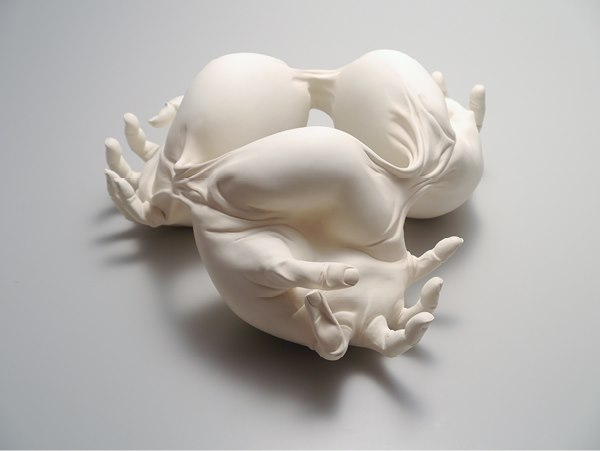With winter’s arrival, the Fremantle Arts Centre (FAC) boasts an ambitious set of five new exhibitions, weaving together the work of local and international artists. Bound by the locality of Fremantle and its history as a port city, this is a somewhat conventional theme for FAC. In addition, with the brevity of each one-room show I couldn’t quite decide whether my glass was left half empty or full. At times it felt very disjointed, at others it felt very connected. But before you decide to go (or not) here’s a quick run through and some thoughts on the moments which provoked me.
The first of five is Ground Plane by Fremantle local, Trevor Richards, who transforms the Main Gallery with one of his site-specific interventions. Employing the principles of hard-edge abstraction, Richards creates a dialogue between colour, pattern, history and architecture. Next is Perth-born artist, James Angus, with Papier Mâché for Beginners. You might know him as the guy responsible for Grow Your Own, or more colloquially, that giant green cactus thing in Forrest Place. Here, however, his twelve papier mâché sculptures line the walls of the Hall Gallery, engaging in a bright and playful relationship with every-day objects, a history of monumental sculpture, and processes of digital engineering and manufacture. Gallery Three stages Dia-Rong Lee’s Trace of Wreckage. Conceived during her residency at FAC through the Asialink Reciprocal Artist Exchange Program, the Taiwanese ceramicist’s meticulously crafted sculptures reference the human form in states of transformation. Both hyperrealistic and abstract, fragile yet hard as stone, Lee’s work holds complex tensions worth the time taken to flesh out.
The next shows are predominantly derived from the City of Fremantle Art Collection and were surprisingly the two which kept me thinking after I left. In the Collections Gallery is Pilot Painter: Captain George Forsyth which showcases a mix of small-scale paintings by Western Australia’s first appointed Harbour Master and amateur artist, George Forsyth (b.1842). In the adjacent Kathleen O’Connor Gallery is Safe Harbour, a group show of some well-loved local artists who together represent Fremantle’s port as a vibrant place of cultural ex/change.
At first sight, Pilot Painter is no more than an historical snapshot of colonial Fremantle presented through the dominant white male perspective (haven’t we heard this one before?). Yet, after a while of wandering, the selection of work becomes a little less about Forsyth himself and begins to illuminate the curious foundations of our convict-built city. Embellished with a Victorian gothic aesthetic, the stars of the show might well be the six pen, ink and watercolour paintings hung on the left-hand wall. The charming little oval vignettes usher you in to observe them closely. Hauntingly beautiful, their age and fragility are amplified by tiny rips, creases and a sepia tint from oxidation.
Their significance, though, lies in what is pictorially omitted––the ghosts which seem to haunt them. Government House, Rottenest (sic) Island West Australia (1870) reminds us of a dark past; at the time Forsyth painted it, Rottnest Island (Wadjemup) was a penal colony for Indigenous men and boys who suffered horrific and unjust imprisonment. Another, Fremantle Lunatic Asylum (1870), eerily pictures the building in which the viewer stands, once overcrowded with the “mentally ill”, many of which would not be deemed as such by today’s standards, yet would remain veiled from society, until freed by death. Safe Harbour somewhat remedies this darkness by presenting Fremantle’s history as racially, politically and culturally complex. Most notable is Noongar artist Laurel Nannup’s painting First Contact (2013) depicting the arrival moment of white settlers to the Swan River (Derbarl Yerrigan). Leslie Morgan’s The Welcome Wall (2014) represents the experience of Anglo-Indian migrants who arrived during legislation of the White Australia Policy. The Fremantle Art Collection is a rich and diverse archive, harbouring many stories but willing to reveal them to those who look in the right places. Go and find out for yourself.
All exhibitions run until Sunday July 21.
Words by Claudia Minutillo

